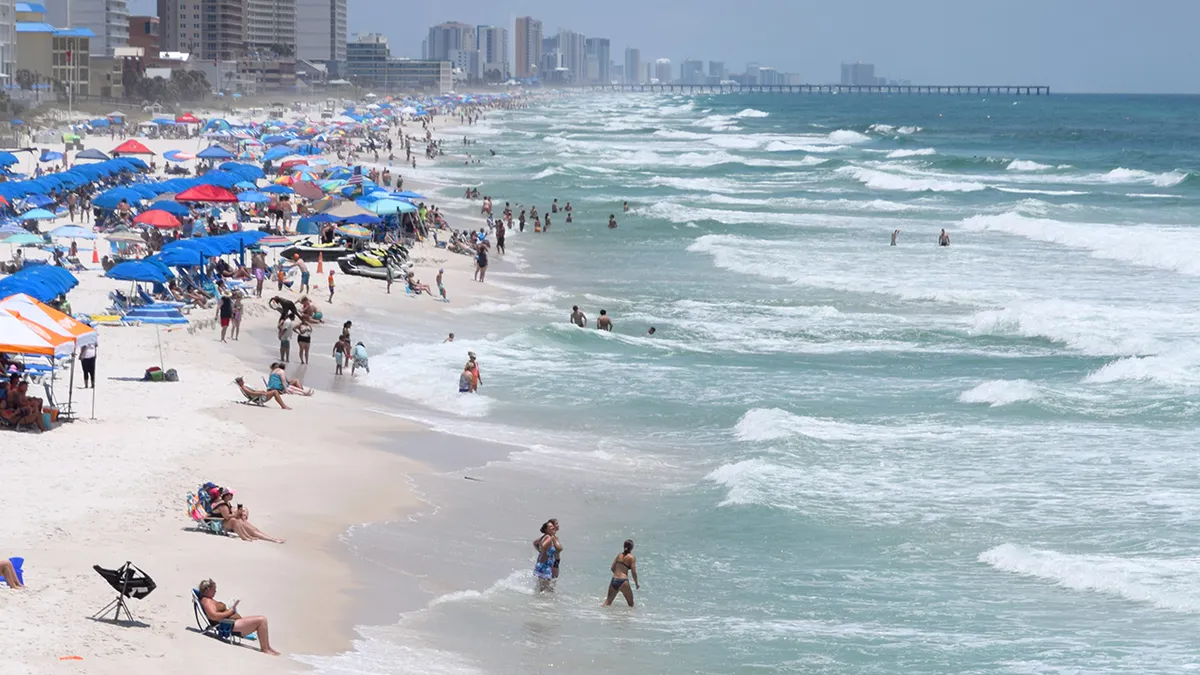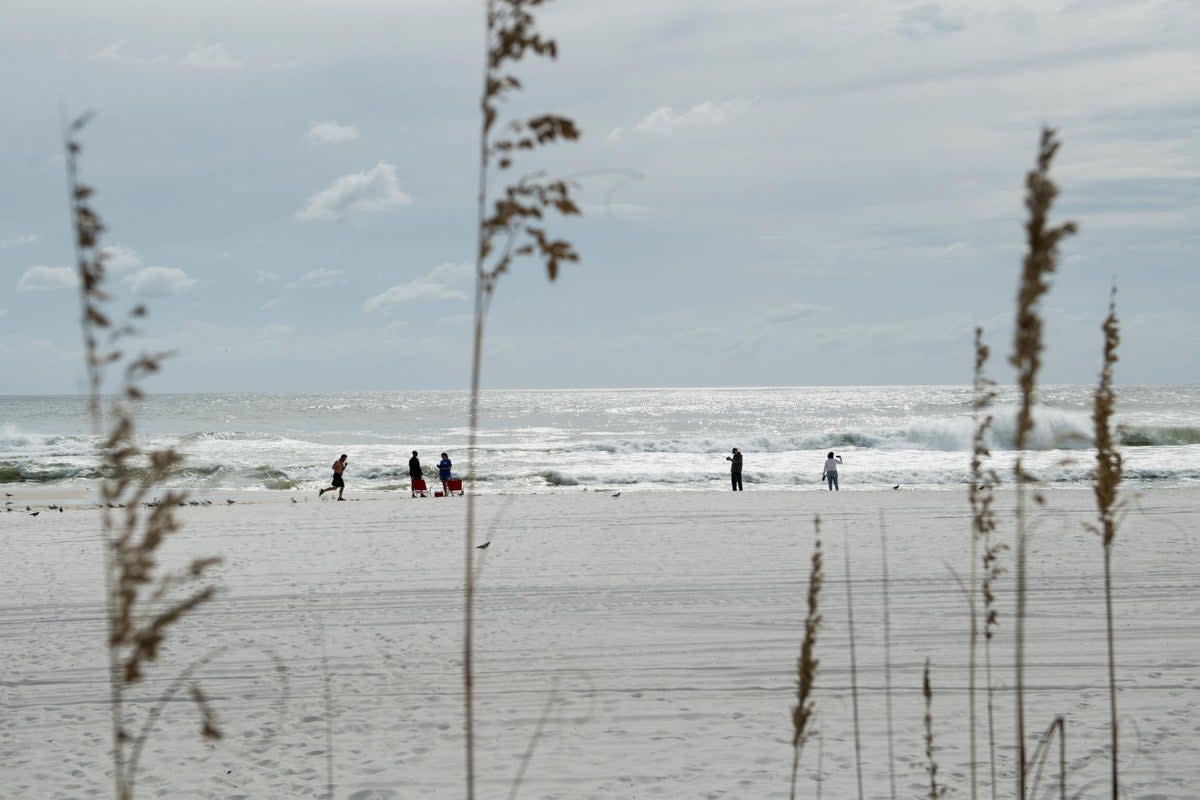Rip Current Dynamics and Formation

Panama city beach rip current – Rip currents are powerful, narrow channels of fast-moving water that flow away from the shore, often through breaks in the sandbar. They can be difficult to spot, as they often have a calm, clear surface, but they can quickly pull even strong swimmers out to sea.
The relentless grip of Panama City Beach rip currents has claimed yet another life, leaving behind a void of sorrow and unanswered questions. As the news of yesterday’s drowning reverberates through the community, it serves as a chilling reminder of the treacherous nature of these hidden killers.
The currents, with their deceptive calmness and irresistible pull, continue to lurk beneath the waves, posing a constant threat to unsuspecting swimmers.
Rip currents are caused by the interaction of waves with the underwater topography. When waves break on the shore, they push water up the beach. This water then flows back down the beach in a thin layer called the longshore current. If there is a break in the sandbar, some of this water will flow through the break and out to sea. This creates a rip current.
The rip currents of Panama City Beach are no joke. They’ve been responsible for numerous drownings, including the recent panama city beach drowning today. These powerful currents can pull even the strongest swimmers out to sea, so it’s important to be aware of them and take precautions when swimming in the ocean.
Factors Influencing Rip Current Strength and Duration
The strength and duration of rip currents can be influenced by a number of factors, including:
- Wave height and frequency: Larger waves and more frequent waves create stronger rip currents.
- Tidal stage: Rip currents are often stronger during low tide, when the sandbar is exposed and the water is shallower.
- Wind speed and direction: Strong winds can create stronger rip currents, especially if they are blowing offshore.
- Underwater topography: The shape of the underwater topography can influence the formation and strength of rip currents.
Identifying and Avoiding Rip Currents
Rip currents are powerful, narrow channels of fast-moving water that can pull swimmers away from the shore. They are often difficult to see, but there are several ways to identify them. One way is to look for breaks in the wave pattern. Rip currents often occur where there is a break in the line of waves, or where the waves are choppier than usual.
Another way to identify rip currents is to look for choppy water. Rip currents often have choppy, turbulent water that is different from the surrounding water. If you see choppy water, it is best to avoid swimming in that area.
Avoiding Rip Currents, Panama city beach rip current
If you are caught in a rip current, the most important thing to do is to stay calm. Do not try to swim against the current. Instead, swim parallel to the shore until you reach calmer water. Once you are out of the rip current, swim back to shore at an angle.
Here are some additional safety guidelines for swimmers and beachgoers:
- Swim only at beaches that have lifeguards.
- Obey the lifeguards’ instructions.
- Swim in areas with calm water.
- Be aware of the signs of a rip current.
- If you are caught in a rip current, stay calm and swim parallel to the shore.
Rip Current Mitigation and Rescue: Panama City Beach Rip Current

Rip currents pose a significant threat to beachgoers, but proactive measures can mitigate their impact and enhance safety. Lifeguards and beach patrols play a crucial role in monitoring and responding to rip currents, while public education and awareness programs are essential for reducing the number of rip current-related incidents.
Lifeguard and Beach Patrol Response
Lifeguards and beach patrols are trained to identify and respond to rip currents promptly. They use various techniques to monitor beach conditions, including visual observation, binoculars, and drones. When a rip current is detected, lifeguards may use flags, whistles, or megaphones to alert swimmers and advise them to stay out of the water.
In the event that a swimmer is caught in a rip current, lifeguards are trained to perform swift and effective rescues. They use a variety of techniques, including:
- Direct rescue: The lifeguard swims directly to the swimmer in distress and assists them back to shore.
- Tube rescue: The lifeguard uses a rescue tube to reach the swimmer and pull them back to safety.
- Boat rescue: If the rip current is strong or the swimmer is too far from shore, lifeguards may use a boat to reach the swimmer and assist them.
Public Education and Awareness
Public education and awareness programs are essential for reducing the number of rip current-related incidents. These programs aim to educate beachgoers about the dangers of rip currents and how to recognize and avoid them. They may involve:
- Distributing informational brochures and posters at beaches and other public areas.
- Conducting educational presentations and workshops for schools, community groups, and other organizations.
- Using social media and other online platforms to share information about rip currents and safety tips.
The sun-drenched sands of Panama City Beach beckon, but beware the treacherous rip currents that lurk beneath its azure waters. These powerful currents can swiftly carry even experienced swimmers out to sea, leading to drowning in Panama City Beach.
While enjoying the beach’s allure, remain vigilant, heed the lifeguards’ warnings, and respect the unpredictable forces of the sea.
The deadly rip currents of Panama City Beach are a constant threat, but beachgoers can stay safe by checking the panama city beach flags today. The flags indicate the level of danger, and swimmers should only enter the water when the flags are green or yellow.
If the flags are red, it is too dangerous to swim.
